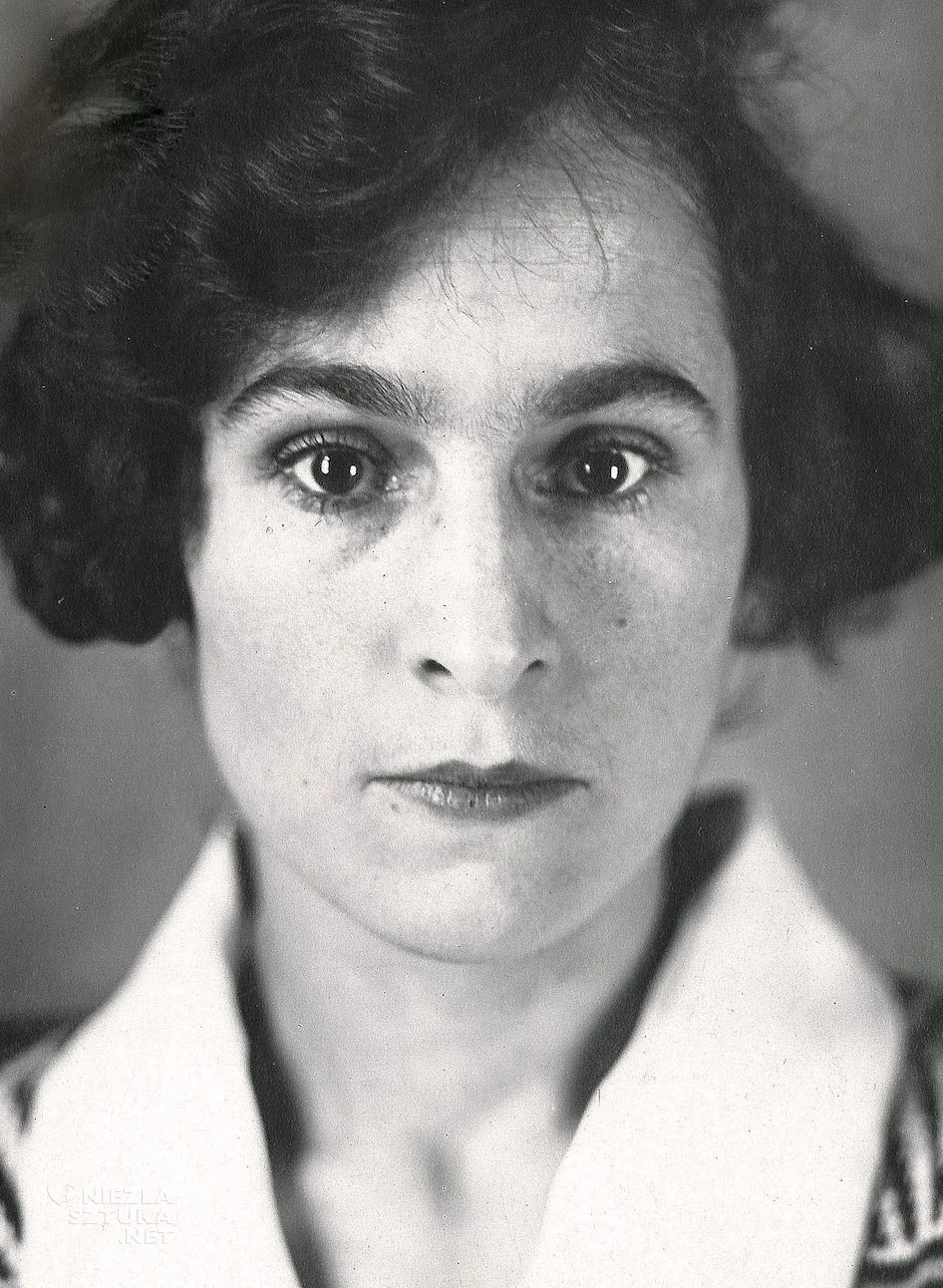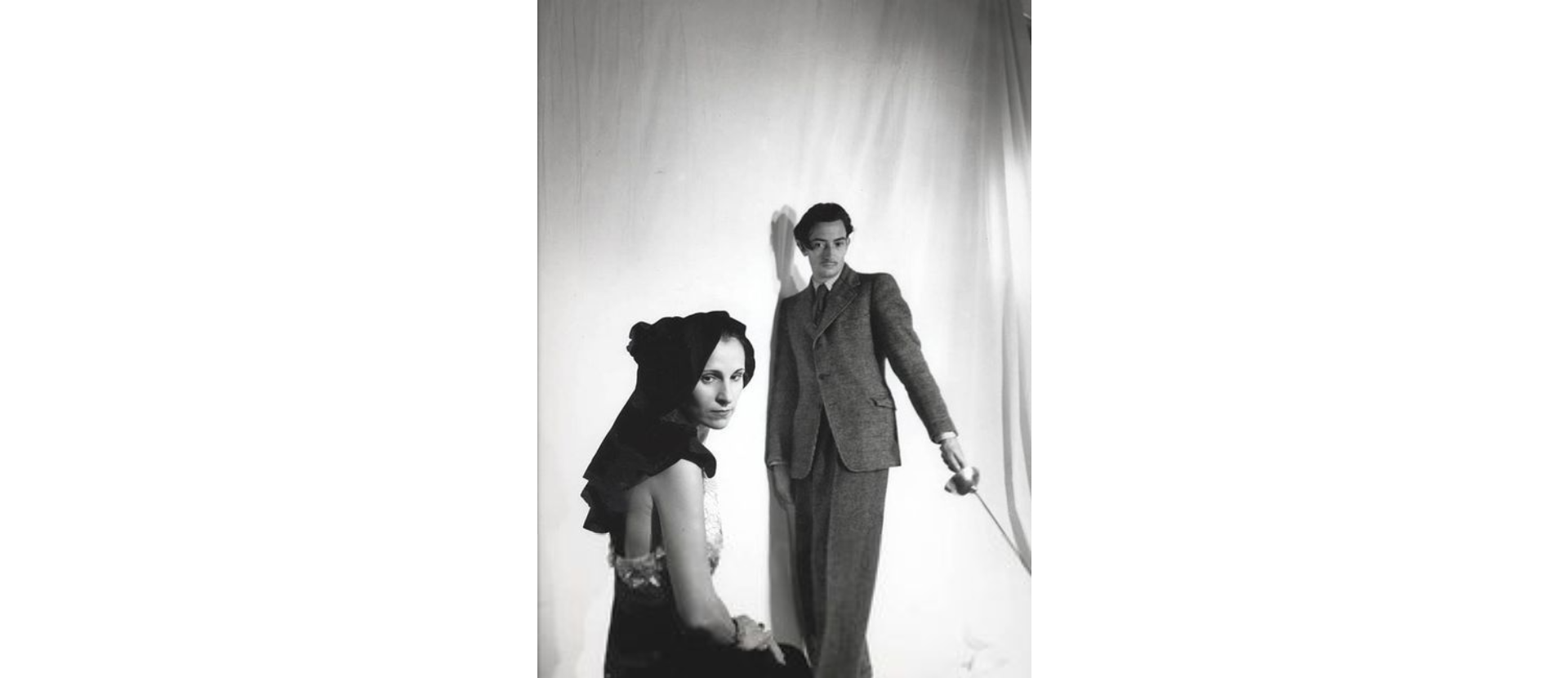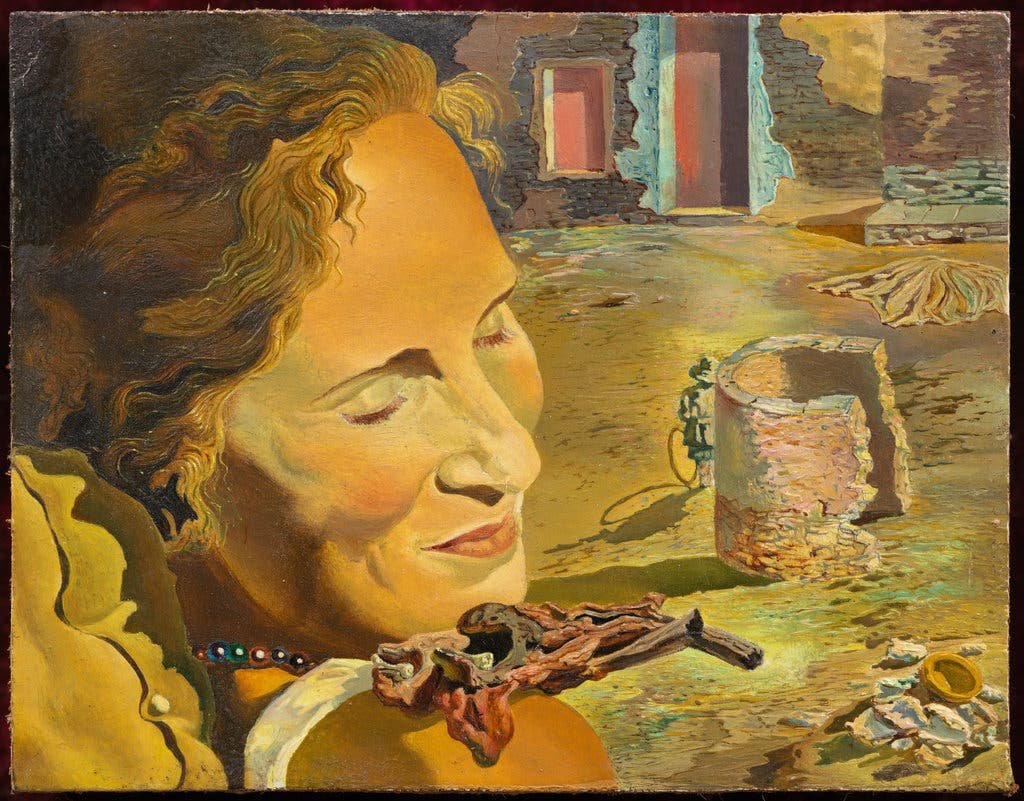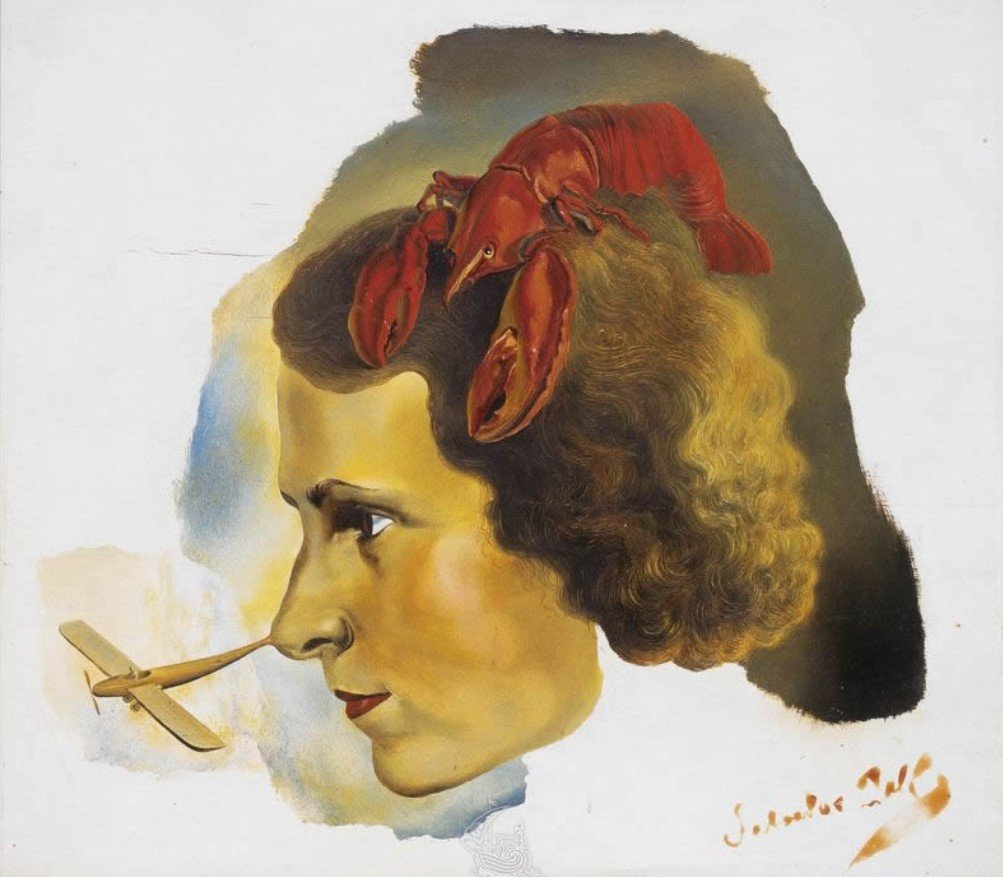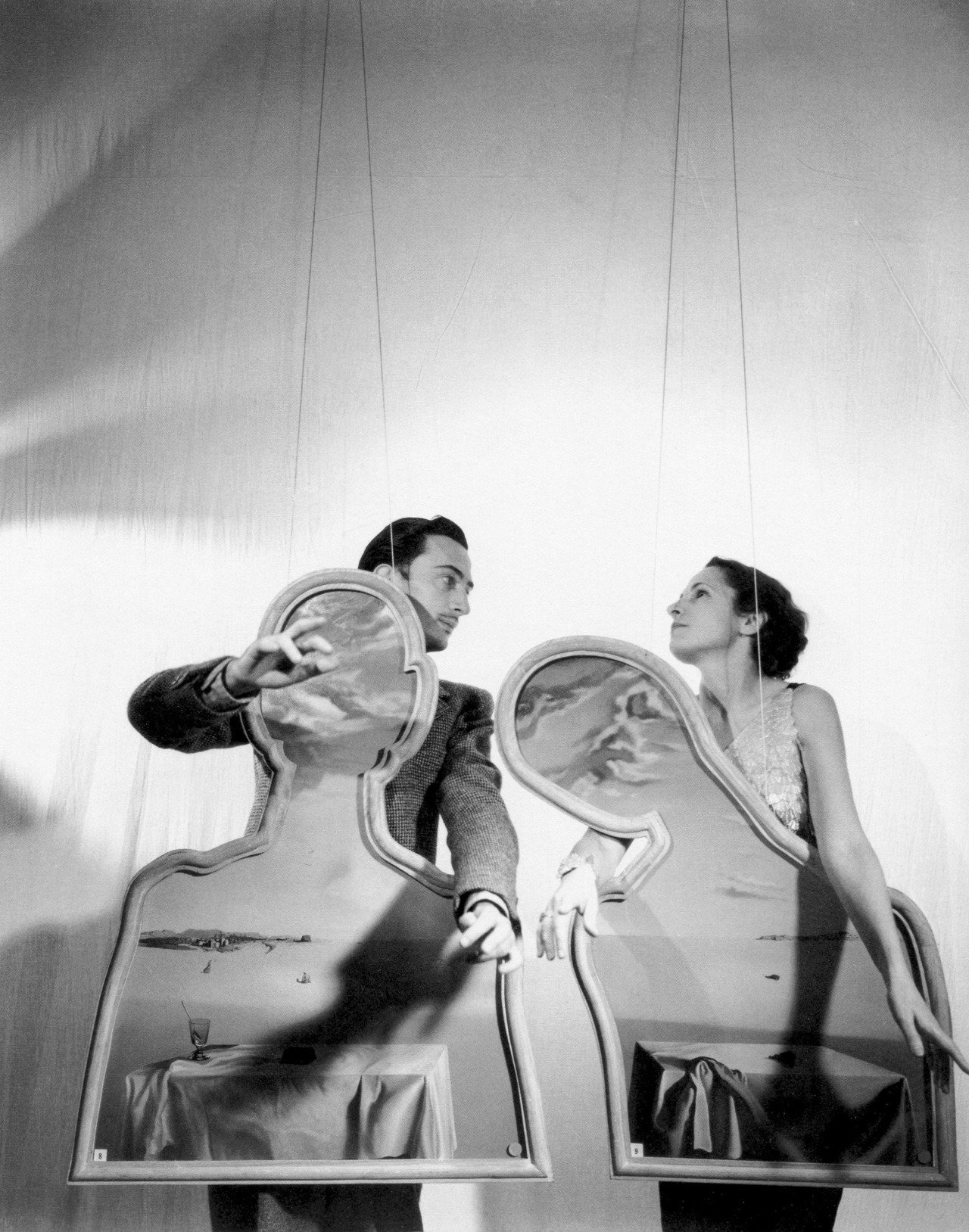Episode #95: Cherchez La Femme, or The Woman Behind the Art-- Gala Dalí (Season 11, Episode 4)
There’s a phrase in the French language that goes, “Cherchez la femme.” In translation, it means “find the woman,” or “look for the woman,” and typically it’s derogatory, a phrase used as an explanation for the reasons why a man may be behaving badly. Cherchez la femme, some say, meaning that “woman troubles” are assumed to be at the core of any man’s real problems. But I like the idea of appropriating the phrase “cherchez la femme” to mean that we’re going to look for the women who made things right in art history, who bolstered and brought attention to some big-name artists.
Welcome to season 11 of ArtCurious, where we’re highlighting the lives and work of the women who supported some of the world’s favorite artists. Today, we’re getting to know Gala Dalí, the notorious wife, muse, and unflappable supporter of the most iconic Surrealist in history.
Please SUBSCRIBE and REVIEW our show on Apple Podcasts and FOLLOW on Spotify
Don’t forget to show your support for our show by purchasing ArtCurious swag from TeePublic!
SPONSORS:
Betterhelp: Get 10% off your first month of counseling
GEM Multivitamins: Get 30% off your first order
Magic Mind: Get 20% off your purchase of this “magical little elixir” with our special promo code ARTCURIOUS20.
Athletic Greens: Get a FREE 1-year supply of immune-supporting Vitamin D and 5 FREE travel packs with your first purchase
Want to advertise/sponsor our show?
We have partnered with AdvertiseCast to handle our advertising/sponsorship requests. They’re great to work with and will help you advertise on our show. Please email sales@advertisecast.com or click the link below to get started.
https://www.advertisecast.com/ArtCuriousPodcast
Episode Credits:
Production and Editing by Kaboonki. Theme music by Alex Davis. Logo by Dave Rainey. Additional music by Storyblocks. Research help by Mary Beth Soya.
ArtCurious is sponsored by Anchorlight, an interdisciplinary creative space, founded with the intent of fostering artists, designers, and craftspeople at varying stages of their development. Home to artist studios, residency opportunities, and exhibition space Anchorlight encourages mentorship and the cross-pollination of skills among creatives in the Triangle.
Recommended Reading
Please note that ArtCurious is a participant in the Bookshop.org Affiliate Program, an affiliate advertising program designed to provide a means for sites to earn advertising fees by advertising and linking to bookshop.org. This is all done at no cost to you, and serves as a means to help our show and independent bookstores. Click on the list below and thank you for your purchases!
Episode Transcript
Some people think that visual art is dry, boring, lifeless. But the stories behind those paintings, sculptures, drawings, and photographs are weirder, more outrageous, or more fun than you can imagine. In ArtCurious Season 11, we’re highlighting the lives and work of the women who supported some of the world’s favorite artists. Today, we’re getting to know Gala Dalí, the notorious wife, muse, and unflappable supporter of the most iconic Surrealist in history. This is the ArtCurious Podcast, exploring the unexpected, the slightly odd, and the strangely wonderful in Art History. I'm Jennifer Dasal.
Now, I must confess that prepping this episode of the podcast was an eye-opening experience for me, simply because I really didn’t know anything about Gala Dalí—and in some ways, she’s still enigmatic. And that was part of what made Gala so enticing, what drew people to her side again and again. She was secretive, distant, mysterious for the sake of mystery. It was hard to know her intentions, her reasons, and thus, hard to get to know who Gala Dalí really was.
Gala wasn’t her real name, by the way. Her given name was Elena (sometimes listed as Helena) Ivanovna Diakonova. She was born in 1894 in Kazan, Russia, as the third of four children of Ivan and Antoniene Diakonova. Elena, our proto-Gala, grew up in Moscow with good opportunities and a fine education. After her father Ivan’s death when Elena was 11, her mother remarried, and it was Elena’s stepfather, a well-established lawyer, who paved the way for her future. With his connections, she was able to secure a spot at the Brukhonenko Female Institute of Moscow before moving on to university-level coursework at a finishing school in St. Petersburg. She trained, as many women are, to be a teacher, and had every intention of becoming one, except that something got in the way: tuberculosis. Often called consumption, tuberculosis afflicted Elena’s lungs, causing her to cough constantly and to lose weight. Distressed, her family sent her to a sanatorium—a health spa, really, near Davos, Switzerland, in 1912, when Elena was 17 years old. The hope was that she would improve thanks to the salubrious waters and air of the Alps. And the good news is that it worked: after a nearly two-year stay, Elena was discharged with a clean bill of health—and a new fiancé.
But it wasn’t Salvador Dalí—at least not yet. While at the Sanitorium in Switzerland, Elena met Eugène Grindel, a young Frenchman about her same age, also seeking tuberculosis treatment. Eugène and Elena bonded immediately, drawn to each other’s passion for literature—with Eugène especially expressing his desire to become a well-respected poet. It was he who would bestow his beloved with the nickname “Gala.” Teenagers deeply in love, they were discharged from the sanatorium in 1914 but were forced to go their separate ways, with Eugène returning to France and Elena to Russia. Yet they pledged their lives to one another—and by 1917, they married. Their only child, a girl named Cecile, was born a year later.
By this point in their young lives, Gala wasn’t the only one moving about under a pseudonym. Her new husband adopted one, too, becoming, indeed, the poet Paul Éluard . After serving in World War I, Éluard was ready to make a splash in the literary world, and Gala, ever his supportive muse, was there to help. When another writer suggested that Éluard meet a like-minded group of up-and-coming thinkers who had just begun their own literary journal, it felt like fate. In one fell swoop, Éluard met the leaders of the burgeoning French Surrealist movement: Louis Aragon, Philippe Soupault, and André Breton. Together, the four writers just… fit. Scarred by the war, they rejected much of the expectations of the bourgeoisie, instead finding comfort in the lack of constraints, and sometimes, even the lack of money. Freedom, expressed through dreams and word associations, was the answer. And Gala was drawn up into this world as equally as her husband, and she could keep up. She was smart, feisty, and had an innate knowledge of what would make a good poem, a good story, or a good work of art. She was also very determined—and that forcefulness of personality would become one of her most memorable characteristics, with folks like André Breton claiming it as destructive, even demonic.
Gala and Éluard had a very progressive relationship, with both parties seeking affections and attentions outside of their marriage, and—spiciness alert—the couple even engaged in a ménage à trois for three years with their fellow Surrealist icon, Max Ernst. But in the late 1920s, Gala was bored, perhaps, and was ready for something new. After all, she had been Éluard’s muse for fifteen years at that point. She may not have known it at that point, but she was ready to become someone else’s inspiration. And she met him in 1929.
Coming up next, it’s love at first sight-- right after these quick messages. Thanks for listening.
Welcome back to ArtCurious.
Gala accompanied Paul Éluard on a trip to Spain that year, alongside fellow Surrealist Rene Magritte and Magritte’s wife, Georgette. Part of the reason for the visit was that Éluard was hoping to talk some sense into his friend, a fellow artist who was going through a bit of a rough time, to put it lightly. Salvador Dalí, a 25-year-old painter from Figueres, Spain, had begun receiving a smattering of attention for his precisely drawn, strangely dreamlike images that inspired anxiety and confusion in many contemporary viewers. He was unique among those following in the Surrealist mode, and his star was, oh-so-slowly, on the rise—and to capitalize on that slow-growing recognition, his gallerist and art dealers were clamoring for him to complete canvases for potential sale. But Dalí wasn’t having it. He was mentally breaking down, refusing to speak, and laughing hysterically at any given moment. Éluard and Magritte, it appears, were visiting Spain to try to help. But they couldn’t find a way to quell the nerves of the lunatic painter. But then Gala walked through the door, and everything changed. According to Gala’s biographer, journalist Tim McGirk, the group noticed the vibe, and came up with a plan. As McGirk writes, quote, “if Dalí was so besotted by Gala, perhaps she alone could help him.” Unquote. And she did. Dalí got back to painting—and Gala, ten years older than he, remained by his side.
Writers like Tim McGirk and Nina-Sophia Miralles from the Paris Review rightly interrupt their tellings of the meeting of Gala and Dalí to caution us too much, as readers, from getting too gushy about a romantic tale. Yes, the pair fell in love, but Gala gave up her entire life—including basically abandoning her daughter, her only child-- to move into her new love’s beach hut, a shack with no running water, no heat, and no electricity. Her life with Éluard had been prosperous—even luxurious—but not so with Dalí—or at least not when she first met him. But all that would change with time, and mostly with Gala’s intense efforts at promoting her husband’s work and supporting his artistic legacy.
As with Paul Éluard and several of the other Surrealists, Gala became Salvador Dalí’s muse and model, becoming an ever-increasing subject in his paintings as the years passed. She was, in some ways, his most recurring motif: there is Gala, nude from behind, her spine the focal point of the canvas; there she is, again, dressed in a button-down shirt, with one breast incongruously dangling out; in Galatea of the Spheres, her face is constructed from a mass of unconnected spheres, with the title a reference to both the model herself and to the virtuous nymph brought to life by the sculptor Pygmalion in Greek Mythology. She’s even portrayed a couple of times as the Virgin Mary in paintings like The Madonna of Port Lligat, from 1949. That Dalí chose her as the model for Mary, that holiest of mothers, is an interesting insight, perhaps, into their relationship. Gala, by all accounts, was a terrible mother to her daughter, even before Gala abandoned Cecile and Éluard for Dalí. But in many ways, she transferred over any maternal affection that she may have felt, or perhaps should have felt, onto Dalí. She was not only the artist’s muse, but she was also his caretaker, dressing him, cooking for him, shopping for him. She oversaw his life—and while it was not a rarity for a woman to do these domestic tasks for her partner, especially in a heteronormative relationship in the 1930s, Gala became everything to Dalí, the central woman in his life.
Perhaps the most important role that Gala undertook—Gala, by the way, who would officially become Gala Dalí after the couple married in a civil ceremony in 1934—was as Dalí’s manager. Beginning around 1937, she began doing everything from shuttling her husband’s work around to local galleries, to managing his contracts, negotiating with dealers, and finding new patrons. And it worked. Smart and savvy, she convinced Dalí that they should move to the U.S. to capitalize on the young nation’s growing riches. She suggested subject matter that would be marketable to a wider audience. She battled aggressively to make sure that Dalí received the best commissions, the greatest recognition, the highest sales. She promoted him every step of the way.
And she made enemies every step of the way, too. It would be easy to dismiss that statement as a misogynistic side-effect of being a strong, assertive woman in mid-century Europe and North America, but truly, Gala Dalí was not the most loveable person in the world. She was distrustful of most people and had a particular distaste for other women, whom she didn’t respect. McGirk’s biography, titled Wicked Lady, is full of truly awful stories about Gala’s temper and misbehavior. If she disliked the look on someone’s face, she’d spit right at them. If someone was speaking too much, or speaking ill of her, she’d viciously stub her cigarette out on their arm. Around Paris, she was given the nickname of “Gala la Gale,” with “la gale” translating, in French, to “scab,” a way to refer to a particularly spiteful person. And in a particularly eye-opening 1998 article in Vanity Fair magazine, British art historian—and the former vice president of Dalí’s gallery—John Richardson calls Gala rat-like, a bully, a “demonic dominatrix,” “an authentically Sadean monster,” referring to the infamous Marquis de Sade, and “a scarlet woman.” So, yeah. Gala wasn’t well-loved. But Salvador Dalí loved her—and perhaps that was what truly mattered.
Not that their relationship was perfect by any means—though know relationship is, of course. For nearly the entirety of her adult life, Gala was known to have an irrepressible sex drive, an insatiable desire for men, especially ones who were younger than she was. By the mid-1950s, Gala was devoting more and more time to a series of short-term relationships and dalliances while Dalí whiled away, painting in his studio. Some said that Dalí helped her initiate relationships, as he was a voyeur enticed by the concept of her engaging in sexual relationships with other men, and that may very well be true—although I don’t imagine that Gala needed any help in initiation, but that’s just a guess. And to be sure, Dalí’s sexuality is a big ol’ knot that isn’t the easiest to untangle—he seemed to have some anxiety, even phobias, surrounding women, especially women’s anatomy, and would later claim Gala as his only quote-unquote “full” sexual partner. Ultimately, though, their partnership seemed, for the most part, to have worked, especially for the first few decades, with Dalí once writing, quote, “I would polish Gala to make her shine, make her the happiest possible, caring for her more than myself, because without her, it would all end.” Unquote. They solidified their union by marrying a second time—this time, in a religious ceremony--in 1958.
Gala and Salvador Dalí’s good times couldn’t last forever, though, and the rest of the story is coming up next—right after this break. Come right back.
Welcome back to ArtCurious.
For all the good that Gala did for Salvador Dalí’s career, she did cause some problems. Beginning in the 1960s, it has been alleged that Gala forced her husband to sign blank canvases, which she then passed along to forgers for completion before selling them as 100% Salvador Dalí originals. Some also take these allegations a step further by claiming that over a span of twenty years, Dalí signed reams of lithograph paper for the same purpose—all of which has caused immense confusion and frustration in the secondary art market. How can you tell if a Dalí is a real Dalí, and not a forgery? It’s hard to say—and whether or not Gala is to blame, and whether or not Dalí himself was in on the con, are two questions that remain unanswered.
Then, there’s the money. Gala loved to gamble, and in the 1970s she frequented underground casinos on visits to New York City, where she maintained, as Nina- Sophia Miralles, writes, quote, “something of a male harem, a perpetual parade of young lovers, when she herself was well into her eighties.” Unquote She spent lavishly and unabashedly on her lovers, too, providing one—a Broadway star performing then in the title role of Andrew Lloyd Webber’s Jesus Christ Superstar—with a Long Island mansion and several authentic Salvador Dalí works, a gift of which the artist was unaware… until he was alerted to their upcoming sale at the auction house, Christie’s. So, that’s…not…great.
As the 1980s dawned, neither Salvador nor Gala was faring well, health-wise. At age 70, Dalí retired from painting due to palsy, a Parkinson’s-like affliction that kept him from maintaining a hold on his paintbrush. Gala, for her part, was growing senile. The spouses grew testy with one another, even coming to occasional blows, according to some. To treat his shaking hands, a growing depression, and potential drug addiction, Gala often concocted medicinal tinctures for him, which probably contained at least some amphetamines, which didn’t help his health to improve—in fact, it may have caused further neural damage. But again, questions still remain: was Gala conscious of doing this, and was she doing it on purpose? Some believe that her senility was a ruse, a way for her to couch her wish to make her frail husband listless and docile. And while it’s hard to know for sure, it reads like another round of Gala-hating, of Gala-blaming. After all, that was a major pastime among those who knew Gala while she was alive—and even after her death following a severe case of the flu in 1982, she was dismissed as a demon bride, a woman who commercialized a great artist’s work and made them worse, a money-grubbing, power-mad harpy. These are the kinds of terms that have long been lobbed at Gala Dalí. And I don’t know that they are entirely fair. She was aggressive, yes, but aggression is typically only framed as a negative when referring to a woman—aggression in men is read, instead, as power and assertiveness. She managed her husband’s art career because art is a business just like anything else, and she worked hard to make sure that Dalí’s paintings were known, were seen, and made an impact. Dalí made the art—but Gala made Dalí, transforming him--over a span of a half-century--from a shack-dwelling, shell-shocked twenty-something to a god of Surrealism, a face as iconic and instantly recognizable (or even more so) than Frida Kahlo and Pablo Picasso. Without her, it’s entirely possible that Dalí as we know him would not have existed.
And without her, after Gala’s death at age 87, Dalí, as we know him, didn’t exist, at least not in the same way. He stepped away from public life almost entirely, and friends reported that, in his grief, he stopped eating, scratched his face, and refused to allow anyone to speak her name. In short, as Tim McGirk notes, quote, “After Gala’s death, Dalí lost his will…to even live.” But live he did—for seven more years. He died on January 23, 1989, at the age of 84.
I noted at the top of the episode that I knew little about Gala Dalí prior to determining that I wanted to discuss her life as part of this season of ArtCurious. And I still feel like I don’t know much about her. So much of her story, like many others we’ve discussed this season, has been shared second-hand, and people seem to either love or hate Gala… with most, it seems, falling on the side of the latter rather than the former. And I confess I feel conflicted about her. I love that she was a woman who went after what she wanted without hesitation and without excuses, whether it be a patron for her husband, or a lover fifty years her junior. She was, if you can excuse my language, an original #badassbitch. But it’s hard to dismiss her utter hatred of motherhood and her abandonment of her daughter, much as I hate to judge her. And the whole stubbing-your-cigarette-out-on-someone’s-arm thing. We can’t forget that, either. But ultimately, Gala’s story is one that reminds me of humanity at its most... human. Gala was good. Gala was bad. Gala was a positive influence on her famous husband. Gala was a terrible affliction on her famous husband. Gala was all the things, all the time, all at once. We all are, aren’t we? But if there’s only one thing we might know for sure, it’s that she had an impact on modern art in a way that few truly have. She gave us one of art’s most iconic and iconoclastic figures. And it is to Salvador Dalí that I’ll give the last word. Declaring his wife’s importance in his life, he once noted, quote, “I love her more than my mother, more than my father, more than Picasso, and even more than money.”
Thank you for listening to the ArtCurious Podcast. This episode was written, produced, and narrated by me, Jennifer Dasal. HUGE thanks to Mary Beth Soya for her awesome research for this episode and for almost all of our episodes this season. Our theme music is by Alex Davis at alexdavismusic.com, and our logo is by Dave Rainey at daveraineydesign.com. Our podcast is co-produced by Kaboonki - podcasts, creative video, and more. Subscribe to their show, Subgenre, a podcast about the movies, available on Apple Podcasts, Spotify, and at subgenrepodcast.com. Kaboonki: Leave your mark. The ArtCurious Podcast is sponsored primarily by Anchorlight. Anchorlight is a creative space, founded with the intent of fostering artists, designers, and craftspeople at varying stages of their development. Home to artist studios, residency opportunities, and exhibition space Anchorlight encourages mentorship and the cross-pollination of skills among creatives in the Triangle. Please visit anchorlightraleigh.com.
The ArtCurious Podcast is also fiscally sponsored by VAE Raleigh, a 501c3 nonprofit creativity incubator, which means you can donate tax-free to “ArtCurious” to show your support. To find the donation links and for more details about our show, please visit our website: artcuriouspodcast.com. We’re also on Twitter and Instagram at artcuriouspod.
Check back with us soon as we explore the facts, and the fictions, of the unexpected, slightly odd, and strangely wonderful in art history.

